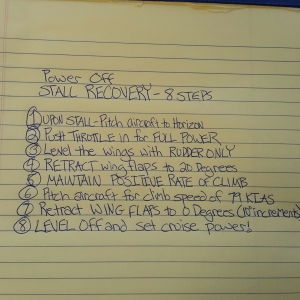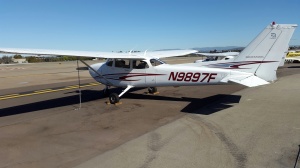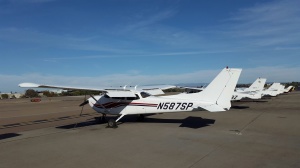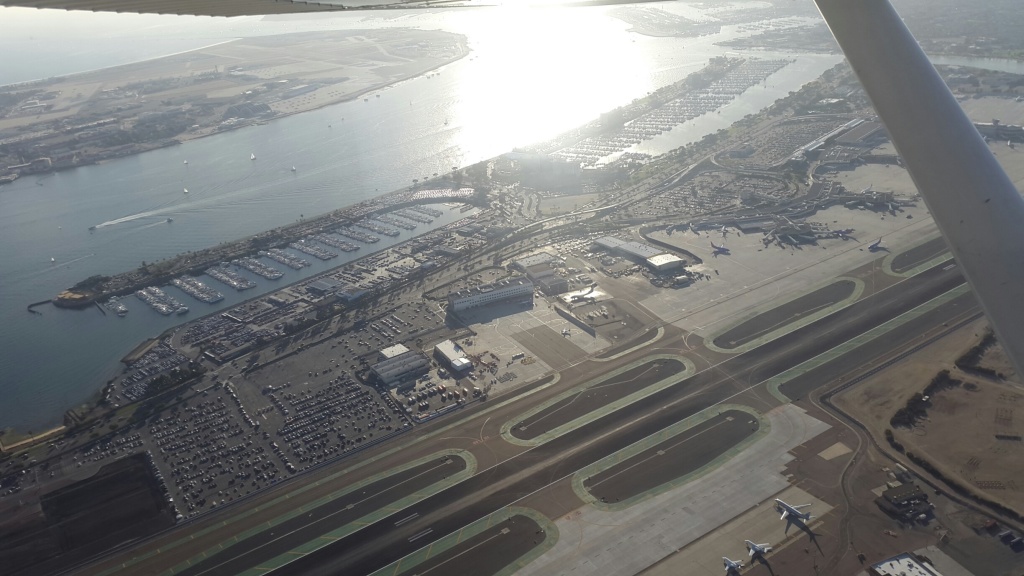Featured Youtube Video
My Latest Instagram Post
Instagram did not return a 200.Categories
- About Me (3)
- Adoptable Pups (1)
- All Things Ava (1)
- Aviation Weather (8)
- Beauty & Fashion (2)
- Business of Aviation (2)
- Child Sexual Abuse (2)
- Cross Country Flying (8)
- Dangerous Drugs (4)
- Dog Rescue (3)
- FAA Dispatcher Exam Prep (3)
- Favorite Things (7)
- Flying Lessons (25)
- Grieving (1)
- Holiday Fun (2)
- Home Decor (2)
- Hotel Reviews (1)
- IFR Written Test (3)
- Inspiration (4)
- Instrument Checkride Preparation (5)
- Legal Marketing (7)
- Life with a Toddler (6)
- Motivation (3)
- Movies (2)
- Music (3)
- Personal Injury Law (6)
- Private Pilot Exam (12)
- Recipes (2)
- Song Meanings (1)
- Taylor Swift (1)
- The Bachelor (1)
- VOR (1)
- Work Travel (1)
Recent Posts
- Save Energy and Save Money ~ Get $10 When you Sign up with OhmConnect!
- 2018 Review: Sheffield School of Aeronautics – Dispatch School in Fort Lauderdale
- Kitchen Table Sanding & Refinishing Project – Dewalt Sander and Minwax Stain
- Pokolodi Lodge Review – Aspen Snowmass, CO
- Aircraft Dispatcher Exam: Lesson Two (Aerodynamics and Aircraft Systems) – Wing Lift Devices
| M | T | W | T | F | S | S |
|---|---|---|---|---|---|---|
| « Jun | ||||||
| 1 | 2 | 3 | 4 | 5 | 6 | 7 |
| 8 | 9 | 10 | 11 | 12 | 13 | 14 |
| 15 | 16 | 17 | 18 | 19 | 20 | 21 |
| 22 | 23 | 24 | 25 | 26 | 27 | 28 |
| 29 | 30 | |||||
Categories
- About Me
- Adoptable Pups
- Aerodynamics and Aircraft Systems
- All Things Ava
- Aviation Weather
- Beauty & Fashion
- Business of Aviation
- Child Sexual Abuse
- Cross Country Flying
- Dangerous Drugs
- Dog Rescue
- FAA Dispatcher Exam Prep
- Favorite Things
- Flying Lessons
- Grieving
- Holiday Fun
- Home Decor
- Hotel Reviews
- IFR Written Test
- Inspiration
- Instrument Checkride Preparation
- Legal Marketing
- Life with a Toddler
- Motivation
- Movies
- Music
- Personal Injury Law
- Private Pilot Exam
- Recipes
- San Bernardino City Shelter
- Song Meanings
- Taylor Swift
- The Bachelor
- VOR
- Wing Lift Devices
- Work Travel
Power Off (Approach to Landing) Stall – Chair Flying the Steps
Tomorrow I have another flight lesson, and we will be going over more basics, and hopefully doing power-off stalls for the last time. I have to get it perfect. In our pre-flight briefing, I will need to do some chair flying, which is not as fun as it sounds. It does involve sitting in a chair, but there’s no flying involved in chair flying. It is rather a visualization technique. When I’m chair flying with my instructor it’s my job to tell the instructor what I’ve learned and step-by-step, how I will do certain maneuvers. Tomorrow, my instructor will ask me to walk him through the power-off approach to landing stall, and I will be able to recite, with my eyes closed, these 11 steps:
- Select a minimum entry altitude of 2,000 feet
- Verify the area is clear of traffic by executing shallow turns
- Reduce throttle to 1,700 RPM
- Apply backpressure to maintain level flight
- Verify airspeed is 110 KIAS for 10 degrees of flaps and 85 KIAS for 20 and 30 degrees of flaps
- Select full down-wing flaps in 10 degree increments
- Reduce throttle to idle
- Reduce airspeed to 65 KIAS
- Initiate a 500 feet-per-minute descen
- Level the aircraft by pitching to a landing attitude
- Recognize and announce the onset of the stall.
And for further reinforcement, I created a video to aid in memorization. I am not going to go to bed until I can recite and explain this thoroughly.
Cessna 172 Power Off Stall Recovery – 8 Steps
I learned this weekend that I need to have my procedures an maneuvers memorized completely – 100%. Of course, understanding is more important than just memorization. I need to be able to explain the procedure with my eyes closed, from memory. It’s been awhile since I’ve had any schooling where memorization was so important. Not only do I need to know what to do, I need to be able to explain what I need to do, and then do it. I hate fumbling my explanation or forgetting important steps. It is frustrating and I feel really dumb when I don’t know what I need to do.
In each lesson after my preflight instruction, my instructor and i meet in the pilot briefing room in the hangar and have a little pow wow. We discuss what we are working on that day and then we usually do chair flying, where I either sit with my eyes closed, or in front of the cockpit poster. John asks me to walk him through a particular procedure, such as stalls. And then I talk through step by step what I will be doing, where I will be looking, etc.
In my next lesson, we will be doing power off stalls again, hopefully for the last time so we can move on to the next stage. I plan to have my steps completely understood and memorized. I made a little video tonight that I will play over and over the next couple of days so that I can recite this back at my next lesson.
Putting Fear In It’s Place ~ Letting Go of My Fear of Stalls
 My last flying lesson last week was pretty scary, and really for no real legitimate reason other than I let myself get scared. Nothing remotely close to bad happened. It sounds dumb to even talk about, but practicing the stall maneuver really freaks me out, probably because it feels like the plane is going to fall 5,000 feet out of the sky and I am going to plunge to my death in someone’s backyard out in Valley Center. But I am realizing that if I’m going to be a pilot, stall maneuvers are just something I’ve got to get used to and comfortable with. In other words, confronting my fears is a very necessary step in achieving success.
My last flying lesson last week was pretty scary, and really for no real legitimate reason other than I let myself get scared. Nothing remotely close to bad happened. It sounds dumb to even talk about, but practicing the stall maneuver really freaks me out, probably because it feels like the plane is going to fall 5,000 feet out of the sky and I am going to plunge to my death in someone’s backyard out in Valley Center. But I am realizing that if I’m going to be a pilot, stall maneuvers are just something I’ve got to get used to and comfortable with. In other words, confronting my fears is a very necessary step in achieving success.
Saturday morning, I will be back to Pinnacle Aviation and CRQ for another flight lesson and this time, I’m going to be ready. I’m going to know what to do, and I am NOT going to panic or throw up or yell at my instructor. I will have my 8 steps to stall recovery memorized and I will be ready to execute like a champ. Here’s what I’m working on memorizing this week:
Power Off Stall Recovery – 8 steps
- Upon stall – pitch the aircraft to the horizon
- Push throttle in for FULL POWER
- Level the wings with the rudder only
- RETRACT Wing flaps to 20 degrees
- Maintain a positive rate of CLIMB
- Pitch aircraft for a climb speed of 79 KIAS
- Retract FLAPS to 0 degrees in 10-degree increments
- LEVEL OFF at entry altitude and set cruise power
There is a Zig Ziglar quote I like and it goes like this: “Far too many people have no idea what they can do because all they’ve been told is what they can’t do.” Sometimes, I think we have no idea what we can do because we let ourselves believe we can’t do something. Or, we don’t let ourselves think we can do something because we are afraid. Afraid of what? Afraid of lots of things, including failure, the number one fear! Failure can mean many things to many people, but in the case of flying maneuvers, failure is also accompanied with death. I will not fail. I will know what to do, and I won’t let myself get scared.
Stay tuned for a flight recap on Saturday – hopefully with a happy report of well-executed stall maneuvers and recovery!
November 26th Flying Lesson Recap – Stalls and Air Traffic Control Communications
 I had another lesson this afternoon at Pinnacle Aviation Academy. In this lesson, I began work on air traffic control communications and also stalls. The stalls were really scary for me and I was sweating out of fear/nervousness and the combination of fear and also the falling sensation from the stalls almost made me sick. There was no puke bag on the airplane and I didn’t want to vomit 5,000 feet above some poor little kid walking home from school, so somehow I overcame my nausea and recovered. Although I was very, very glad once the plane was on the ground and safely in its parking spot.
I had another lesson this afternoon at Pinnacle Aviation Academy. In this lesson, I began work on air traffic control communications and also stalls. The stalls were really scary for me and I was sweating out of fear/nervousness and the combination of fear and also the falling sensation from the stalls almost made me sick. There was no puke bag on the airplane and I didn’t want to vomit 5,000 feet above some poor little kid walking home from school, so somehow I overcame my nausea and recovered. Although I was very, very glad once the plane was on the ground and safely in its parking spot.
Why We Learn Stalls
As I learned in my lessons and was reminded today, are three reasons student pilots need to learn stalls:
- We need to learn how to recognize an approaching or accidental stall by sight, sound, and feel;
- We need to know the necessary corrective action to recover from a stall; and
- We need to know what to do to avoid getting into a stalled condition accidentally.
You can do power off stalls and power on stalls. Today we worked on power off stalls, which simulate a stall during the final approach to landing. During your stall recovery, your goal should be to use as little altitude as possible. As soon as airspeed allows, you should smoothly pitch back up again. If a wing does drop, release back pressure on the control stick or wheel and use coordinated aileron and rudder to level the wings.
Stall Recovery
To recover from a stall, you need to do three things. First, you need to decrease the pitch altitude and angle of attack (pitch the aircraft to the horizon). Second, you need to apply maximum allowable power (push that throttle all the way in for full power). And third, you need to regain straight and level flight with coordinated use of all flight controls. To do this, you need to level the wings with the rudder only, retract the wing flaps, maintain a positive rate of climb, and level off at entry altitude.
Air Traffic Control Communications Guide
After I write down ATIS information on my kneeboard (ATIS info is on channel 120.15 at CRQ), I need to request permission to taxi. At CRQ, this goes something like this: “Palomar Ground Cessna November 9897 Foxtrot at Pinnacle Aviation Taxi to Runway 24 with Information (ATIS). Once I get the instruction and read it back, I taxi to the hold short line, do the run up checklist, and then radio the tower and request a departure. If we’re heading out to Valley Center to do maneuvers, I want to do a Right Downwind departure. I tune the radio to Tower 118.6 and request “Palomar Tower Cessna November 9897 Foxtrot Holding Short of Runway 24 Request a Right Downwind Departure”.
What I Need to Work On
I need to work on memorizing my procedures and also just practicing over and over. Everything seems to be easier the second and third time. And more fun, of course!
November 22nd Flying Lesson Recap – Cessna 172 SP Skyhawk, Carlsbad, CA
 Today I had another flying lesson – my 7th since I started at Pinnacle Aviation Academy. So far all of my lessons have been in the Cessna 172R Skyhawk, but today we went out in the 172 SP Skyhawk, which I really liked. It’s just like the “R” but it has 180 hp instead of 160 hp. Maybe it was just my improving flying skills, but I really liked that plane. Normally we head out to Valley Center to practice maneuvers, but today my instructor John and I flew down the coastline past La Jolla and around Point Loma and practice maintaining altitude, climbs and descents, and maintaining directional heading. It was my first time flying on a Saturday afternoon, and I was surprised how busy it was.
Today I had another flying lesson – my 7th since I started at Pinnacle Aviation Academy. So far all of my lessons have been in the Cessna 172R Skyhawk, but today we went out in the 172 SP Skyhawk, which I really liked. It’s just like the “R” but it has 180 hp instead of 160 hp. Maybe it was just my improving flying skills, but I really liked that plane. Normally we head out to Valley Center to practice maneuvers, but today my instructor John and I flew down the coastline past La Jolla and around Point Loma and practice maintaining altitude, climbs and descents, and maintaining directional heading. It was my first time flying on a Saturday afternoon, and I was surprised how busy it was.
Things I worked on today:
- The takeoff checklist: The takeoff always feels hectic and I get a little anxious because are lots of things to remember. Fortunately there are acronyms and checklists to help. “Lights, Camera, Action” is the takeoff checklist as we position on the runway. “Lights” means your lights are on, “Camera” is your transponder, set to ALT (Altitude), and “Action” is your mixture set to full RICH and your throttle all the way in.
- The takeoff callouts: I used to always panic and forget these, but I’m getting better at remembering. Practice makes perfect. As soon as the plane starts moving on the centerline and your power is set to max, you call out “Power Set” and then check your gauges to make sure your oil pressure and oil temperature are both at appropriate levels. If they are, you call out “Instruments Green”. Then check your airspeed indicator (I call it the speedometer, but it’s an airspeed indicator). As you are passing 40 KIAS (“knots indicated airspeed”) you call out “Airspeed Alive”. And then, “Rotate” when you get to 55-60 KIAS.
Once in the air, my instructor and I headed south down along the San Diego County coast line. It’s cool to see such a familiar sight from a different perspective. We flew past Swami’s Beach, the Del Mar horse races where the Bing Crosby season was running, and then past the Torrey Pines Golf Course and Glider Port, and even saw a wedding at Sunset Cliffs. Along the way we practiced maintaining altiude, going from 500 feet to 1,500 feet and back down again. I did much better today than I did in my first couple lessons.
After flying past the Hotel Del Coronado, my flight instructor took over the controls and I managed to get some good pics of the Coronado Bridge, Glorietta Bay, Harbor Island and the San Diego airport. Here is a short video from today’s flight:
After flying over the San Diego airport, we went back up the coastline, again practicing maintaining altitude and directional heading. Then we went up by the Oceanside Pier and practiced slow flight, which I am getting much better at. The lesson ended with a uneventful landing and taxi back to Pinnacle.


